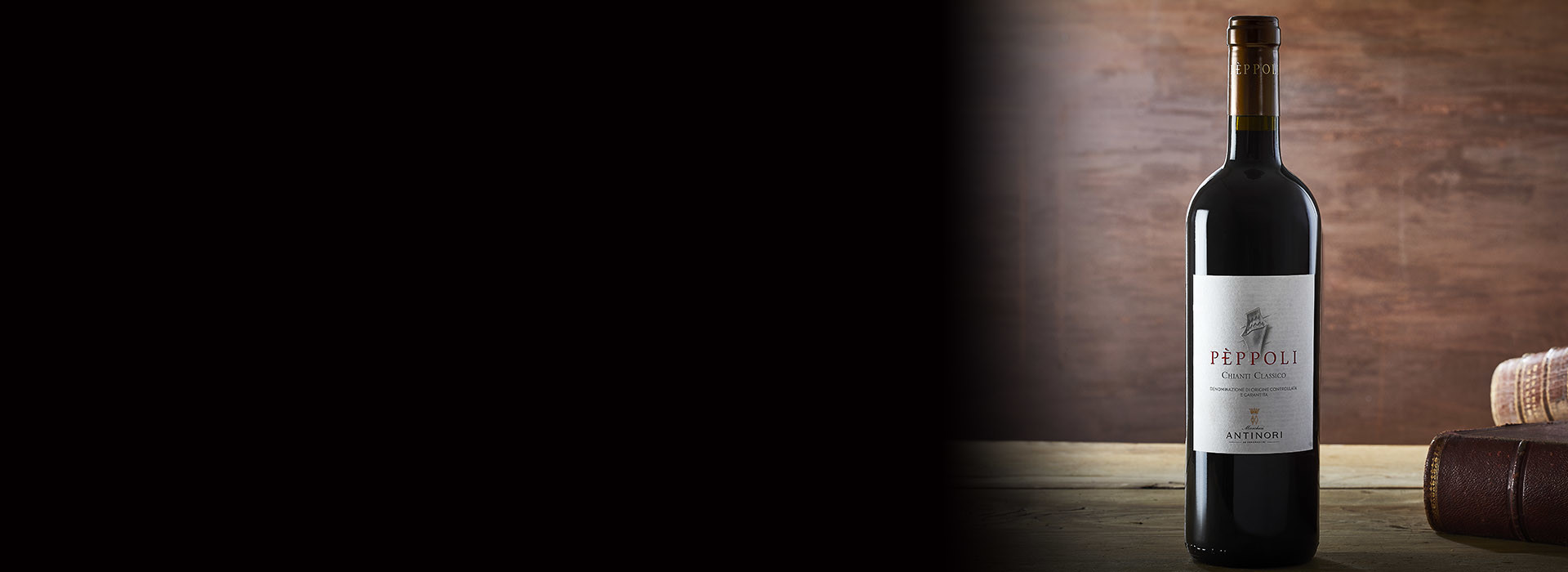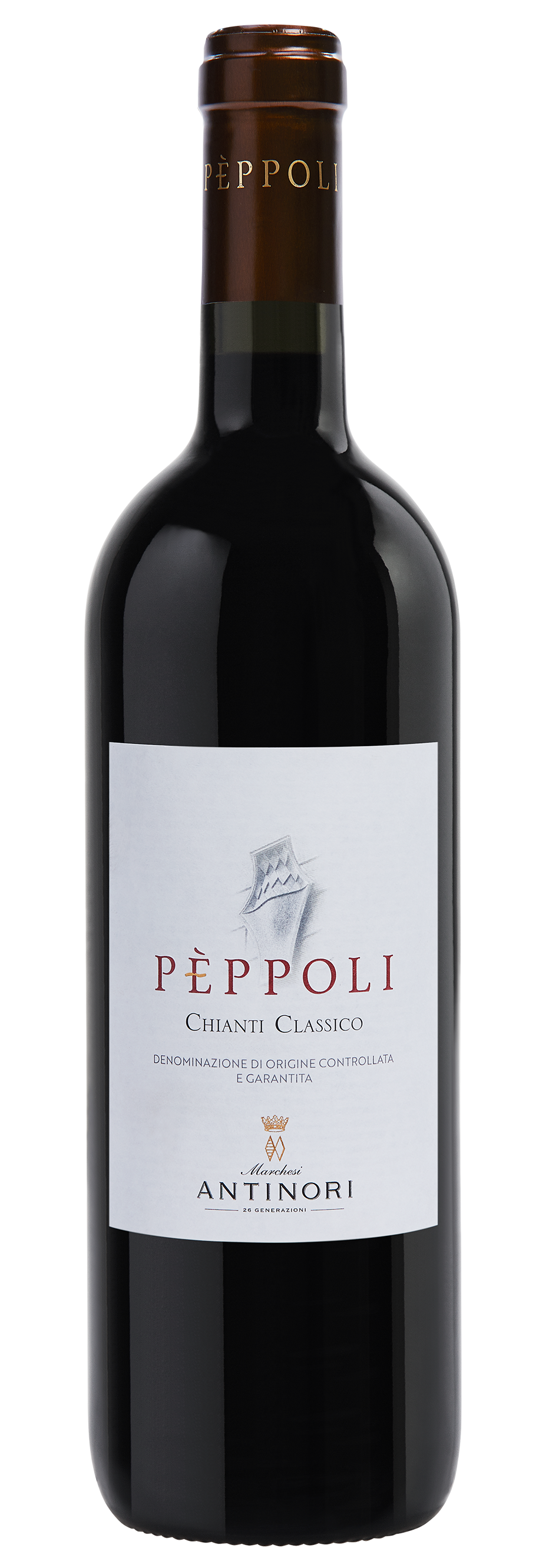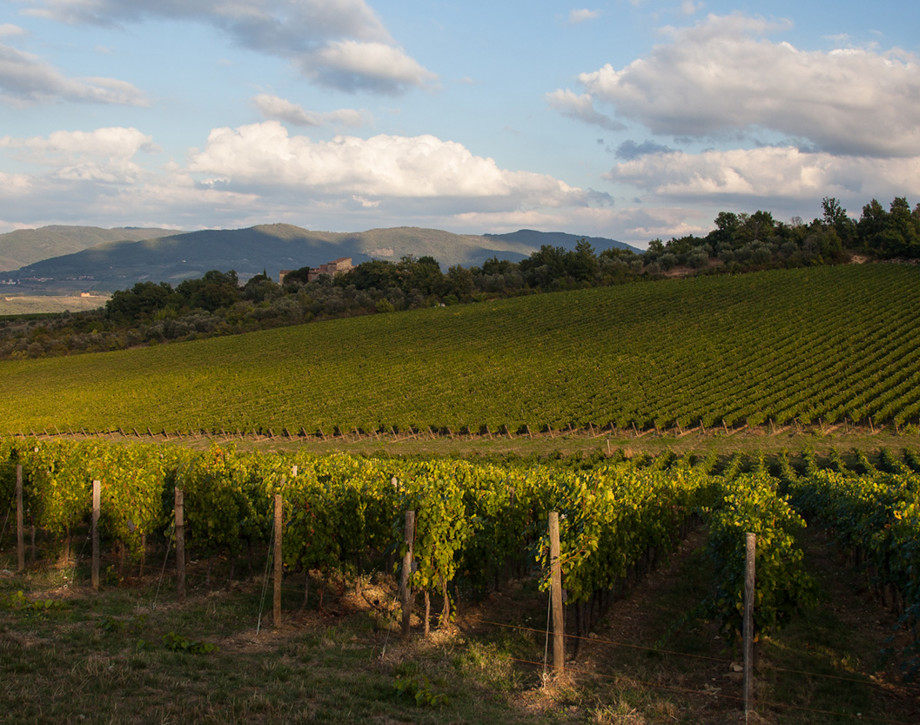Pèppoli

Climate
In Chianti Classico, the late autumn and winter of 2010-2011 were quite cold and rainy with snow followed by a cold snap at the end of the year. A mild and dry late winter and a warm early April adjusted the vine cycle and led to an early bud break, ten days prior to the normal seasonal average. The heart of the growing season was mild in temperature and - on the whole – dry, and July could even be termed cool for the period; a major heat wave, however, then arrived and lasted all the way until mid-September, creating a certain stress on the vines. Harvesting began with Merlot just after September 10th, while Sangiovese and Syrah ripened later and were picked during the last week of the month. A rigorous selection of the bunches was essential for all of the varieties and, thanks to this care and attention, it was possible to pick only grapes of high potential, a crop which gave wines rich in color, fragrant, and varietal in character, important factors in quality wine.
Vinification
The grape varieties were fermented separately to realize the full potential of each. Sangiovese was given ten days of skin contact in stainless steel tanks, while Merlot and Syrah were fermented on their own in to obtain soft tannins and to conserve their fruit by means of a complete control of fermentation temperatures. All three went through a complete malolactic fermentation by winter. They were then blended and aged in oak for a period of approximately nine months, principally in Slavonian oak casks but with a 10% of small American oak barrels as well. The larger casks assisted in maintaining the fruity aromas of the fermentation, while the American oak barrels completed the aromatic range of Pèppoli. The wine was then bottled and given a few months of bottle age before commercial release at 13.5° alcohol.
Historical Data
The Pèppoli vineyards produce a Chianti Classico that is a blend made from Sangiovese grapes and complementary varieties; Pèppoli is recognized and appreciated for the full expression of its fruit. A wine that represents the Chianti Classico territory and its historic grape variety with typical floral and fruity aromas. Pèppoli was first produced in 1985 and since 2013 part of the harvest undergoes vinification at the Antinori nel Chianti Classico cellars.
Tasting Notes
Ruby red in color, the 2011 Pèppoli shows notes of cherries well integrated with the chocolate and vanilla aromas of the oak aging. The palate shows much Sangiovese varietal character. The tannins are soft and silky, and the flavors are long and well sustained.
Awards
James Suckling 90/100 USA

The Wine
The Pèppoli vineyards produce a Chianti Classico that is a blend made from Sangiovese grapes and complementary varieties; Peppoli is recognized and appreciated for the full expression of its fruit. A wine that represents the Chianti Classico territory and its historic grape variety with typical floral and fruity aromas.

Climate
In Chianti Classico, the late autumn and winter of 2010-2011 were quite cold and rainy with snow followed by a cold snap at the end of the year. A mild and dry late winter and a warm early April adjusted the vine cycle and led to an early bud break, ten days prior to the normal seasonal average. The heart of the growing season was mild in temperature and - on the whole – dry, and July could even be termed cool for the period; a major heat wave, however, then arrived and lasted all the way until mid-September, creating a certain stress on the vines. Harvesting began with Merlot just after September 10th, while Sangiovese and Syrah ripened later and were picked during the last week of the month. A rigorous selection of the bunches was essential for all of the varieties and, thanks to this care and attention, it was possible to pick only grapes of high potential, a crop which gave wines rich in color, fragrant, and varietal in character, important factors in quality wine.
Vinification
The grape varieties were fermented separately to realize the full potential of each. Sangiovese was given ten days of skin contact in stainless steel tanks, while Merlot and Syrah were fermented on their own in to obtain soft tannins and to conserve their fruit by means of a complete control of fermentation temperatures. All three went through a complete malolactic fermentation by winter. They were then blended and aged in oak for a period of approximately nine months, principally in Slavonian oak casks but with a 10% of small American oak barrels as well. The larger casks assisted in maintaining the fruity aromas of the fermentation, while the American oak barrels completed the aromatic range of Pèppoli. The wine was then bottled and given a few months of bottle age before commercial release at 13.5° alcohol.
Historical Data
The Pèppoli vineyards produce a Chianti Classico that is a blend made from Sangiovese grapes and complementary varieties; Pèppoli is recognized and appreciated for the full expression of its fruit. A wine that represents the Chianti Classico territory and its historic grape variety with typical floral and fruity aromas. Pèppoli was first produced in 1985 and since 2013 part of the harvest undergoes vinification at the Antinori nel Chianti Classico cellars.
Tasting Notes
Ruby red in color, the 2011 Pèppoli shows notes of cherries well integrated with the chocolate and vanilla aromas of the oak aging. The palate shows much Sangiovese varietal character. The tannins are soft and silky, and the flavors are long and well sustained.
Awards
James Suckling 90/100 USA

Tenuta Pèppoli
The Pèppoli estate is located 5 kilometers north east of the Tenuta Tignanello estate with a total area of 100 hectares (247 acres) of which 50 hectares (123 acres) are planted with vineyards and is home to Peppoli Chianti Classico DOCG. The Peppoli estate has a long standing tradition for producing Peppoli Extra Virgin Olive Oil and Peppoli Red Wine Vinegar made by transforming Peppoli wine into vinegar using traditional methods.
















